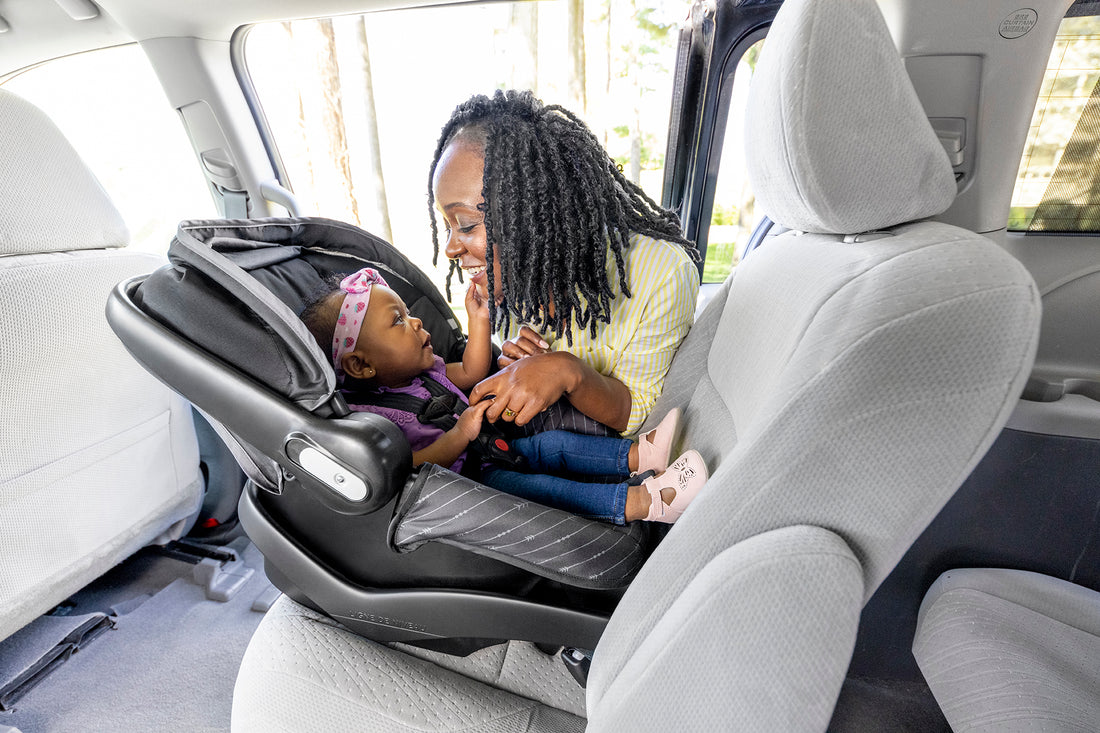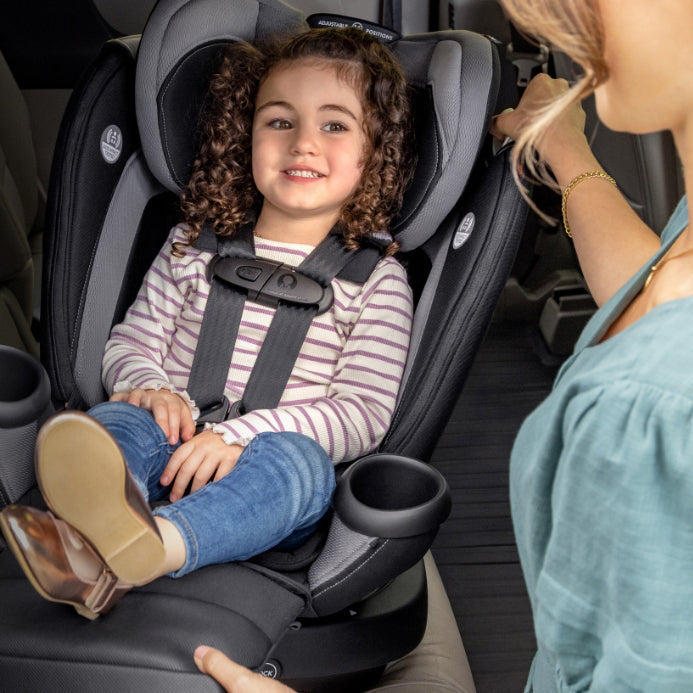
5 Car Seat Myths, Busted!
Don't Fall For These Common Car Seat Myths
When it comes to car seats, the safety of your child is your number one concern. But with so much information out there—and with so many car seats to choose from—it’s easy to get confused, even when your goal is as straightforward as safety.
Let’s breakdown a few of the most common myths and misunderstandings about car seats, so you can hit the road safely.

#1 My child is too old for a rear-facing seat
While many parents assume they should turn the seat around when their child turns one or their feet touch the back of the vehicle seat, the American Academy of Pediatrics recommends keeping children rear-facing until they reach the maximum height or weight for their car seat in the rear-facing orientation (see your car seat manual or label).
Most convertible car seats (or all-in-one car seats) have limits that will allow children to ride rear facing for two years or more. And many children can sit comfortably in the rear-facing position and still be within the height and weight requirements until they are three or even four years old.
#2 When my child’s feet touch the back of the vehicle seat, I need to turn  the seat around
the seat around
Nope. If your child’s legs extend over the car seat in the rear-facing position, not to worry—this is not a safety hazard. There is no data to support the myth that a child’s legs are more susceptible to injury in a crash when rear-facing. The truth is, children within the weight and height limit of their seat in rear-facing mode are safer riding this way, because their head, neck, and spinal cord are protected. Note: children love to bend their legs or even sit cross-legged in their car seat, and this is ok!
#3 It’s time to switch to a booster seat because my child has reached the minimum weight to do so
Minimum weight requirements do not signal a time to switch. Most children aren’t ready for a booster until they’re at least four years old and mature enough to sit appropriately the entire drive. The American Academy of Pediatrics and  many other experts recommend keeping your child in a car seat with an internal harness until they reach either the height or weight limit of their child restraint system. This is good general advice as long as you are using your tether. If seating options are limited or your vehicle does not have a tether available for a larger child in an internal harness seat, a booster may be a better option.
many other experts recommend keeping your child in a car seat with an internal harness until they reach either the height or weight limit of their child restraint system. This is good general advice as long as you are using your tether. If seating options are limited or your vehicle does not have a tether available for a larger child in an internal harness seat, a booster may be a better option.
#4 The middle of the back seat is the safest place for a car seat
This one depends. The middle seat is the furthest from any point of impact in a crash, however there are other factors to consider. First, you must be able to secure your car seat tightly and correctly in that seating position. If the middle seat is narrow or uneven, this can be difficult. Also, many vehicles do not have lower anchors for the middle seating position, so if that is your preferred method of installation, you may need to use one of the window-seat positions. Additionally, if you need to fit more than one car seat in the back seat, it may not be possible to place both car seats right next to each other.
#5 Using the top tether anchor is optional
Out of sight can mean out of mind, but it’s important to remember the top tether.  When installing a forward-facing car seat, always connect the car seat's top tether strap to your car's anchor. While this is a law in places like Canada and Australia, the tether is frequently overlooked in the U.S. This important step can reduce a child's head and neck movement in a crash by 4 – 6 inches.
When installing a forward-facing car seat, always connect the car seat's top tether strap to your car's anchor. While this is a law in places like Canada and Australia, the tether is frequently overlooked in the U.S. This important step can reduce a child's head and neck movement in a crash by 4 – 6 inches.
Unfortunately, there are no standard locations for top tether anchors in vehicles—they can be found in the ceiling, the package shelf, on the back of the back seat, behind the headrest, or even on the floor. Pick-up trucks are even more complicated and often have diverter straps and other features that make usage more difficult. Always check your vehicle owner’s manual for details on where to find the tether anchor and how to use it.
For more information about car seats, visit our blog post on what to do when your child outgrows their car seat or our FAQ page.
Shop Evenflo Car Seats Now!
YOU MIGHT ALSO LIKE:
